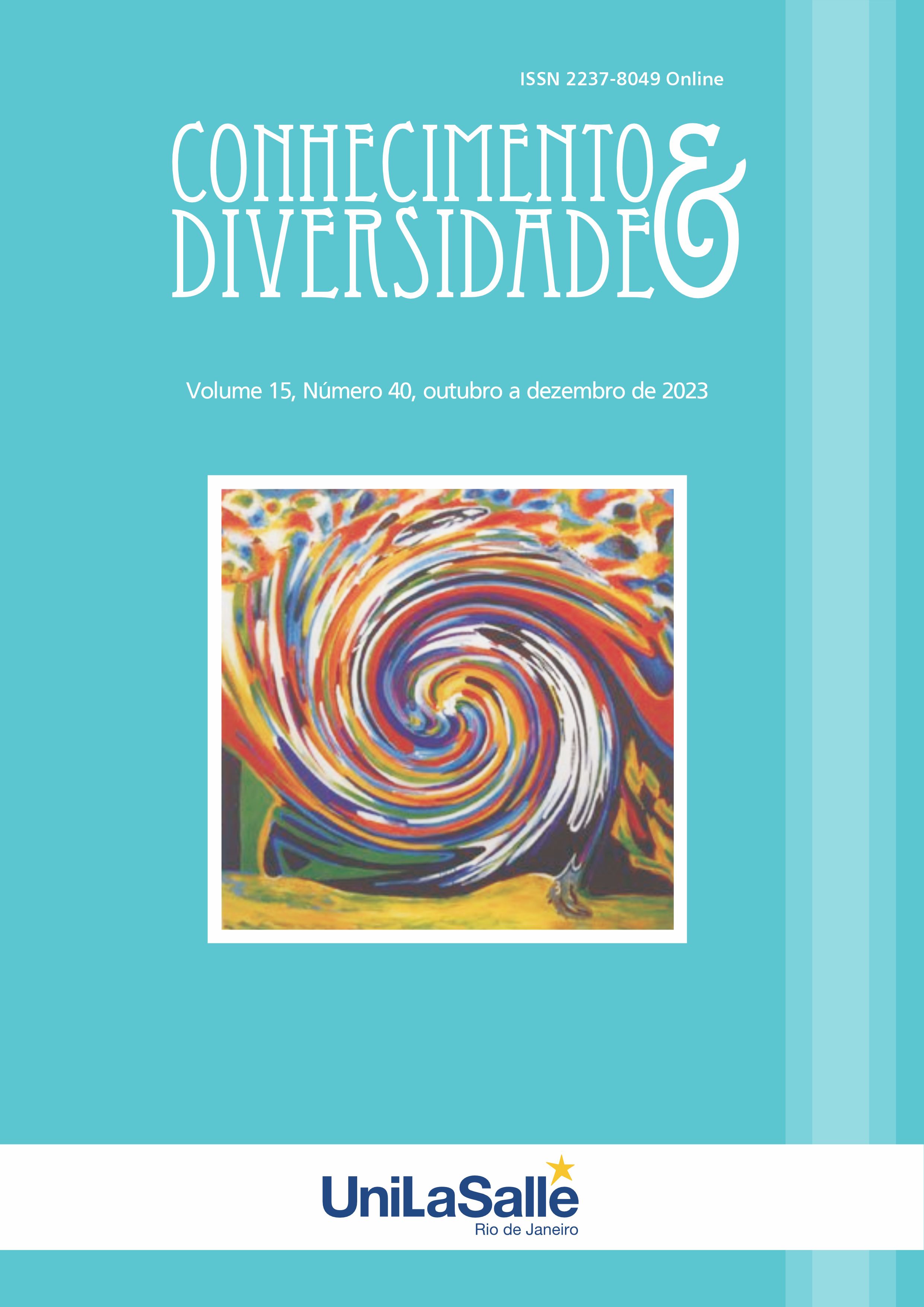PHRASEOLOGICAL UNITS IN MODERN LINGUISTICS
SYSTEMATIZATION AND SEMANTIC ANALYSIS
DOI:
https://doi.org/10.18316/rcd.v15i40.11245Keywords:
Fixed expressions, Language groups, Lexical constructions, Phraseological expressions, Phraseological unitsAbstract
The development of speech culture and communication processes has been influenced significantly by the evolution of communication itself, marked by the incorporation of stable expressions, phrases, and fixed lexical combinations. This transformation has entailed a reevaluation of content and the author's intended message, particularly within the domain of phraseological units. A pivotal area of inquiry within contemporary linguistics involves the assessment of the quality of phraseological unit usage, the delineation of classification approaches, and the formulation of systematization methods tailored to the stylistic and contextual attributes of these linguistic constructs. This article undertakes an examination of the structural components inherent to phraseological units in modern linguistics. Furthermore, it investigates the intricacies of their semantic structure, their contextual utility, and their applications across diverse modes of communication. The article comprehensively considers the intricacies surrounding the evolution of language and the concurrent emergence of new phraseological units. It also addresses the influence of scientific and technological progress, which contributes to the development of novel forms and categories of phraseological units. The distinctiveness in the formation of phraseological units within various language groups can be attributed to a combination of factors, including folk traditions, the written cultural legacy, the creative endeavours of the populace, and the transformation of cultural paradigms. Furthermore, the article emphasizes the significance of systematizing phraseological units, with an emphasis on achieving a qualitative categorization of the most prevalent lexical constructions within the respective language groups under consideration. This article undertakes an in-depth examination of the mechanisms responsible for the generation of phraseological units, as well as the distinctive characteristics in comparing such units across diverse language groups. It also incorporates a comprehensive semantic analysis aimed at elucidating the content and avenues for reinterpretation inherent to phraseological units.
References
Adaxamjonova, M. B, Abduvaliyev, M. A. (2022). Birth and development of phraseology as a linguistic discipline in world linguistics”. Galaxy International Interdisciplinary Research Journal, 10(3), 746-752.
Davila-Montes, J. (2019). Enthymeme, metonymy, and method: comparing genre-bound rhetorical deviations between languages through corpus studies. Language and Intercultural Communication, 19(5), 407-420. Available at: https://doi.org/10.1080/14708477.2018.1545779
Godard, G., Wierzbicka, A. (2014). Words and Meanings: Lexical Semantics across Domains. Languages and Cultures, Oxford and New York: Oxford University Press, 352 p.
Hamidova, T. (2023). Study of phraseological combinations in linguistics. Scientific Collection InterConf, 161, 33-38.
Kim, M., Crossley, S. A., Kyle, K. (2018). Lexical sophistication as a multidimensional phenomenon: Relations to second language lexical proficiency, development, and writing quality. The Modern Language Journal, 102, 120-141.
Kremmel, B., Brunfaut, T., Alderson, J. C. (2017). Exploring the Role of Phraseological Knowledge in Foreign Language Reading. Applied Linguistics, 38, 848-870.
Malikova, A. M. (2022). Comparative Study of Somatic Phraseological Units in English and Azerbaijani Languages. Advances in Social Sciences Research Journal, 9(4), 236-243. Available at: https://doi.org/10.14738/assrj.94.12144
Medvedev, V. B. (2022). Extracts from the comparative description of linguistic images in the phraseological systems of Hebrew and Yiddish. Research Result. Theoretical and Applied Linguistics, 8(2), 41-51. Available at: https://doi.org/10.18413/2313-8912- 2022-8-2-0-3
Melnyk, N. I., Modestova, T. V., Krsek, O. Ye., Uschnevych, S. E. (2021). The phenomenon of ethnicity in the context of linguistics and its significance in the concept of European transcultural educational centers functioning. Journal of Language and Linguistic Studies, 17(3), 1392-1401. Available at: https://doi.org/10.52462/jlls.100
Meral, S, Kishali, E. (2020). A Study on the Intersection of Architectural History and Architectural Conservation. Uskudar Semsi Ahmed Pasa Complex Artsanat, 13, 313-334.
Mokienko, V. M., Nikitina, T. G. (2018). To the concept of a complete vocabulary of folk phraseology: Problems of macrostructuring. Lexicography Issues, 14, 80-106.
Mushaev, V. N., Abdullayev, S. N. (2017). Aspects of polysemy in Turkic and Mongolic languages (Evidence from Kalmyk and Uighur languages). Oriental Studies, 34(6), 103-110.
Odincova, T. Y., Chmyh, I. E. (2018). Stylistic aspect of translation of means of expression (metaphors, phraseologisms, epithets) based on Somerset Maugham’s novel ‘Theater’”. In Scientific dialogue: young scientist, 65-67.
Palimbetova, M. (2020). Problems of genre, artistic language, and artistic methods in Karakalpak dramaturgy during the independence period. Journal of Advanced Research in Dynamical and Control Systems, 12(6), 1037-1042.
Paquot, M. (2021). Measures of phraseological complexity: Reliability and validity. Paper presented at the World Congress of Applied Linguistics, Groningen, The Netherlands.
Radchuk, O., Krapivnyk, G., Palatovska, O., and Nekrylova, O. (2022). The verbalization of notion absence in the english language and culture. Amazonia Investiga, 11(52), 6-14. Available at: https://doi.org/10.34069/AI/2022.52.04.1
Saidova, Z. (2022). Modern Methods of Translating Phraseological Units. Eurasian Research Bulletin, 4, 153-158.
Singleton, D., Leśniewska, J. (2021). Phraseology: Where Lexicon and Syntax Conjoin. Research in Language and Education. An International Journal, 46.
Syzonov, D. (2018). Media Phraseology and the Dynamics of the Ukrainian Language: The Psycholinguistic and Stylistic Paradoxes. Psycholinguistics, 24(2), 277-291. Available at: https://doi.org/10.31470/2309-1797-2018-24-2-277-291.
Zho, H. (2020). Making a stance: social action for language and intercultural communication research. Language and Intercultural Communication, 20(2), 206-212. Available at: https://doi.org/10.1080/14708477.2020.1730393
Downloads
Published
Issue
Section
License
Copyright (c) 2023 Mariya Veresh, Nataliia Demianenko, Olha Rud, Natalia Bytsko, Svitlana Nastenko

This work is licensed under a Creative Commons Attribution 4.0 International License.
As recommended by the Public Knowledge Project, RCD adopts for its articles a CREATIVE COMMONS Attribution CC BY 4.0 license.
This license allows others to distribute, remix, adapt and build upon your work, even commercially, as long as they credit you for the original creation.
This is the most appropriate license offered.
Recommended for maximum dissemination and use of licensed materials.



